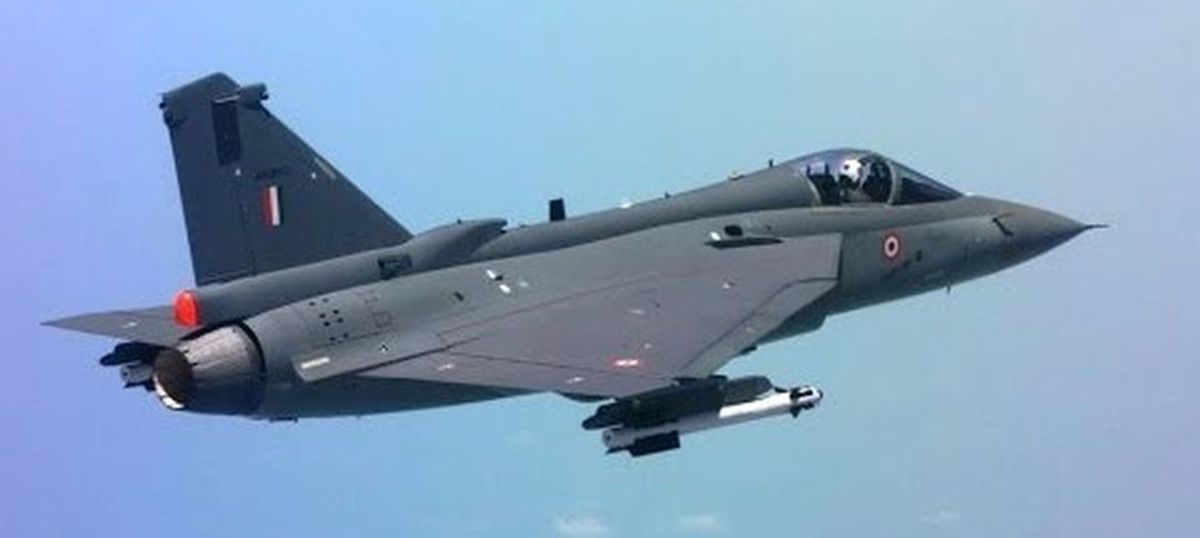Despite facing tough competition for clinching a deal to supply the Philippines Air Force (PAF) with fighter jets, India is marketing its indigenous Light Combat Aircraft (LCA) ‘Tejas’ to the archipelagic country. A team of Indian aerospace major Hindustan Aeronautics Limited (HAL) is in the Philippines presently.
However, the watchers of Philippines defense news are more confident about the Indian Advanced Light Helicopter Mk III clinching a deal with the Philippines Coast Guard than the LCA bagging the fighter deal.
The Philippines launched the MRF tender in 2018 as part of the Armed Forces modernization program’s Horizon Two. The purchase of 12 “fourth generation or higher” multi-role fighter jets will be the PAF’s first fighter jets since the retirement of its Northrop F-5 Tigers in 2005.
A journalist from the Philippines, Aaron-Matthew Lariosa, said on X (formerly known as Twitter): “An Indian Hindustan Aeronautics Limited Test Pilot stands next to a Philippine Air Force S.211. While HAL is advertising its Tejas fighter jet to the Philippines, they are going up against more established competitors in the form of Lockheed Martin’s F-16 V and SAAB’s JAS-39C.”
Korea Aerospace Industries (KAI) has pitched FA-50 as a cost-effective option to modernize the PAF. The PAF already has 12 FA-50PH in its service. South Korea has offered to upgrade its existing fleet to make it capable of conducting air-to-air ground, air-to-sea, and air-to-air missions. This includes fitting these aircraft with an assortment of radar and targeting systems along with a 300-gallon external fuel tank to increase the FA-50 PH’s combat range.
The FA-50PHs have a top speed of Mach 1.5 or one and a half times the speed of sound and are capable of being fitted with air-to-air missiles, including the AIM-9 “Sidewinder” air-to-air and heat-seeking missiles aside from light automatic cannons and bombs.
A dozen FA-50s were acquired from Korea Aerospace Industries for PHP 18.9 billion. The deliveries commenced in November 2015 and were completed in May 2017. The FA-50PHs were deployed during the Battle for Marawi, which raged for five months in 2017.
The Indian team proposing the HAL draws hope from the Philippines, grounding half of its Korean FA-50 fighter jets while flagging logistics woes. Delay in spare delivery hit the operational readiness of the FA-50 jets.
Among other combat jets in the fray are Lockheed Martin’s F-16 and Swedish SAAB’s JAS-39 Gripen. On July 6, 2022, the Philippine News Agency stated that the last contenders for the PAF’s multi-role fighter project are the F-16V Block 50/52 variant and the JAS-39 Gripen C/D + version. The news meant the end of the road for Tejas’ quest for the Philippines order.
But the latest news about the HAL team in the Philippines for Tejas has given new hope for the fighter jets bid. The Indian fighter jet has caused ripples in the defense export market with its aggressive positioning, but it has not been able to bag a single export deal yet. After losing the Malaysian tender, even the Argentinian fighter jet deal seemed to slip out of Tejas’ reach. The Indian Air Force is the sole operator of Tejas at present.

After signing a US$368 million contract for an India-made Brahmos supersonic missile, the Philippine Aerospace Development Corporation (PADC) signed a memorandum of understanding (MOU) with Hindustan Aeronautics Limited (HAL). The Philippines has shown interest in ALH Dhruv as well.
Rotary Wings On Filipino Dreams
During the first-ever visit of a Filipino Coast Guard chief to India in August this year, the Indian Aerospace major HAL conducted a Customer Demonstration Flight onboard ALH MK III at Goa.
The ALH Mk III is a variant of the indigenous Dhruv Helicopter. The Mk III variant has been inducted into the Indian Navy and the Indian Coast Guard. It is a multi-role, multi-mission, and versatile helicopter in the 5.5-ton category.
ALH Mk III is equipped with the most modern surveillance radar that can detect and identify ships and boats up to a range of 120 nautical miles to enable the Coast Guard to keep a vigil across Indian coastal regions.
Its electro-optical sensor allows it to monitor even the smallest vessels at distances as far as 30 nautical miles. Besides maritime reconnaissance, these helicopters can do long-range Search and Rescue operations. ALH MK III is also fitted with a heavy machine gun to undertake constabulary missions.
- Ritu Sharma has been a journalist for over a decade, writing on defense, foreign affairs, and nuclear technology.
- She can be reached at ritu.sharma (at) mail.com
- Follow EurAsian Times on Google News